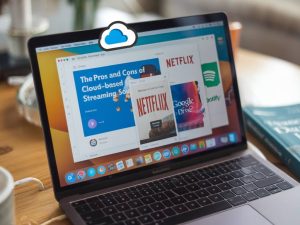The impact of 5G on the future of webcasting and live streaming

The impact of 5G on the future of webcasting and live streaming
In recent years, the advent of 5G technology has begun to revolutionize various sectors, including webcasting and live streaming. The fifth-generation mobile network brings promises of ultra-fast speeds, reduced latency, and innovative applications that could significantly enhance the quality and accessibility of live streaming content. As a journalist specializing in TV broadcasting and YouTube, I’ve observed the growing anticipation around 5G and its potential to transform the landscape of webcasting.
The Basics of 5G
Before delving into its impacts, let’s first understand what 5G technology entails. 5G stands for the fifth generation of mobile networks, a global standard for wireless connectivity. It is designed to deliver higher data speeds, more reliability, massive network capacity, and increased availability. Unlike its predecessors, 5G operates on higher frequency bands, which allows for greater bandwidth.
Key features of 5G include:
- Enhanced Mobile Broadband (eMBB): Focuses on delivering high-speed internet access, making it ideal for streaming high-definition content.
- Ultra-Reliable Low-Latency Communications (URLLC): Enables applications requiring high reliability and low latency, such as live video streaming and real-time gaming.
- Massive Machine-Type Communications (mMTC): Supports a high density of interconnected devices, which is essential for the Internet of Things (IoT).
The Advantages of 5G for Webcasting and Live Streaming
The transition to 5G is expected to bring several benefits to the field of webcasting and live streaming, many of which could be game-changers for content creators and viewers alike.
Improved Streaming Quality
One of the most significant advantages of 5G is the potential for higher streaming quality. With download speeds expected to range from 1 Gbps to 10 Gbps, 5G can support ultra-high-definition (UHD) and 4K streaming with ease. This means clearer images, better sound quality, and an overall enhanced viewing experience. For professional webcasters, this translates to delivering content with superior quality, which can attract and retain viewers.
Reduced Latency
Latency, the delay before a transfer of data begins following an instruction, is a critical factor in live streaming. 5G aims to drastically reduce latency to under 10 milliseconds. With such minimal lag, real-time interactions become more fluid and natural. This is particularly beneficial for live events, virtual reality (VR) experiences, and interactive broadcasts where immediate feedback is crucial.
Enhanced Mobile Streaming
With 5G, mobile streaming will see a significant boost. As more viewers consume content on their smartphones and tablets, the ability to deliver high-quality streams without buffering becomes paramount. 5G’s robust and reliable connection ensures that users can enjoy seamless streaming experiences, whether they are at home, in transit, or attending a live event.
Greater Bandwidth
The increased bandwidth of 5G networks means that more users can stream content simultaneously without degradation in quality. This is particularly important during major events, such as sports games or concerts, where thousands of users might be accessing the stream at the same time. Enhanced bandwidth also allows content creators to host larger online events with more attendees, elevating the scope of what can be webcasted.
Potential for New Applications
5G opens the door to innovative applications that weren’t feasible with previous generations of mobile networks. For instance, augmented reality (AR) and virtual reality (VR) applications can benefit immensely from 5G’s low latency and high-speed capabilities. Imagine virtual concerts, augmented sports broadcasts, or interactive educational livestreams where users can immerse themselves in the experience as if they were physically present.
Optimized Monetization Opportunities
For content creators, 5G offers new avenues for monetization. By providing higher quality streams and more interactive experiences, creators can justify premium pricing models or subscription services. Furthermore, the advertising landscape could see improvements, as brands may be more willing to invest in high-quality, immersive ad experiences that 5G can support.
Challenges and Considerations
While the potential benefits of 5G for webcasting and live streaming are immense, there are also several challenges and considerations to keep in mind.
Infrastructure Requirements
The rollout of 5G requires substantial infrastructure upgrades. The technology relies on a dense network of small cell sites, which means that widespread adoption might take time. Additionally, rural and remote areas may face delays in accessing 5G networks, limiting the reach of enhanced webcasting capabilities in the short term.
Cost Implications
Implementing 5G technology comes with significant costs. From upgrading network infrastructure to purchasing new 5G-compatible devices, these expenses may initially be a barrier for smaller content creators. However, as the technology becomes more ubiquitous, these costs are expected to decrease.
Privacy and Security Concerns
With the increased data transfer capabilities of 5G, there are also heightened concerns around privacy and security. Webcasters and live streamers will need to ensure robust security measures are in place to protect their content and viewer data. This includes using secure networks, encryption, and other cybersecurity practices.
Adaptation and Learning Curve
Transitioning to 5G will require webcasters and content creators to adapt to new tools and technologies. There will be a learning curve as they become familiar with best practices for utilizing 5G to its fullest potential. Training and education will be key in making the most of the new opportunities afforded by 5G.
The Role of 5G in Future Trends
As we look to the future, 5G is poised to play a pivotal role in shaping trends within the webcasting and live streaming industry.
Personalized Content
With enhanced data analytics capabilities enabled by 5G, content providers can offer more personalized streaming experiences. This includes recommending content based on viewer preferences, delivering targeted advertisements, and providing interactive features that cater to individual viewers.
Immersive Experiences
The combination of 5G with emerging technologies like VR and AR will lead to more immersive streaming experiences. Imagine watching a concert from the best seat in the house through a VR headset or participating in an interactive live stream where you can manipulate the environment around you. These experiences will set new standards for engagement and entertainment.
Increased Accessibility
5G has the potential to bridge the digital divide by providing high-speed internet access to underserved areas. This will enable more people to access webcasting and live streaming content, expanding the audience base for content creators. Additionally, 5G’s reliable connectivity means that viewers can enjoy high-quality streams even in areas with previously unstable internet connections.
In summary, the impact of 5G on the future of webcasting and live streaming is vast and multifaceted. From improved streaming quality and reduced latency to new application possibilities and enhanced monetization opportunities, 5G technology is set to usher in a new era for content creators and viewers alike. However, it’s essential to navigate the challenges that come with this transition to fully realize its potential. As 5G continues to roll out globally, we can expect exciting developments that will redefine how we consume and interact with live streaming content.





